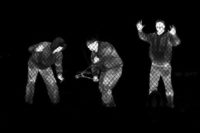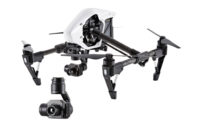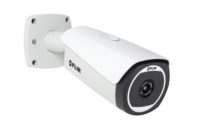In order to achieve more while reducing costs, many enterprises’ security leaders have turned to automation. By adding thermal cameras as part of a larger intrusion detection system, security departments can reduce false alarm rates and even bring operational value back to the enterprise.
Off the coast of Venezuela, there is a cluster of oil platforms. As oil and gas companies try to cut expenses while maintaining operations and profitability, the key is reducing personnel, often by moving to more automation. According to Greg Humphreys, President of WAYFARER Technologies, a firm that focuses on wireless technology for remote areas, and project agent and technical lead for Rockwell Automation for this installation, there are two factors to securing an oil platform, both reliant on staff: convenience and time. In terms of convenience, executives have to account for the cost and availability of helicopters and stand-by staff for emergency evacuations. For time, once a water vessel gets close enough to be a threat, there is a very limited window of opportunity to respond.
“You’re responsible for protecting your workers and your platform assets,” says Humphreys. “An approaching watercraft is a very big ‘what if.’ The degree of that threat can be minimized with cameras. If you can determine a vessel’s threat level at a longer distance, you can take action and evacuate the platform early, solving a problem before the problem begins.”
For the oil platforms in question, Humphreys worked with MOOG Inc. for thermal cameras, which are tied to a radar system through software, so an off-site security team can verify whether an alarm was triggered by an incoming, unknown vessel or a fishing boat that just wandered a little too close. Then, a non-lethal deterrent system (long-range acoustic devices or LRADs) can be used to warn off possible intruders. The LRADs are aimed by MOOG positioners for an accurate and focused deterrence. Through the 25-mile range of the radar, the system creates a 360-degree perimeter around all three nearby platforms.
In Norway, electric utility company Lyse AS acquired security company Nor-Alarm in 2007 for its monitoring centers and residential alarm system capabilities, and in the acquisition, Lyse also gained Nor-Alarm’s technical department, which focuses on developing innovating and cost-efficient security solutions.
According to Nor-Alarm department security manager Ronny Hjørnevik, “The acquisition made us aware that there was a lack of solution for monitoring the security perimeters of the grid and substations. The Norwegian Water Resources and Energy Directorate had through the emergency response requirements set a lot of compliance measures that the utility companies had to fulfill in regards to intrusion and monitoring of unwanted incidents in the grid and substations.”
In class three substations, he notes, regulations stated that “Every unwanted incident or action shall be detected immediately, be verified and managed by an effective response pattern” and “The facility shall have equipment and procedures for efficient and reliable detection, alerting, verification and rapid reaction in case of unwanted events or actions.”
However, Hjørnevik says, utility companies were reluctant to acquire security solutions due to the daunting number of false alarms shown in pilot programs. In 2008, Nor-Alarm started looking into a solution, eventually putting in a successful bid for an integrated system using a video management system, video analytics and a variety of hardware, including access control, intruder alarms and Pelco thermal cameras for an overall concept called NorAlarm Vital Security. The security team also offers its monitoring center as an additional solution for customers who need more personnel to handle incoming alarms.
Now, all alarms are presented through the VMS system, and the operator can trigger a preset message to broadcast through speakers at the substation, or even enable a voice channel to give instructions or warnings. If the alarm is verified as being triggered by an intruder, response personnel are dispatched.
In addition, using thermal surveillance technology helps Lyse AS manage its critical infrastructure on site. The Pelco cameras have the option of adding temperature monitoring, which is used to monitor transformers and other electrical components for signs of overheating, which can give the enterprise a greater return on its investment, as it can reduce the need for manual inspection and mitigate the risk of outage due to overheating.
“Good planning is critical for the cost of installation,” Hjørnevik says. “We have used existing infrastructure where it existed, and where we needed new infrastructure, we have engaged local entrepreneurs. Defining your needs beforehand and keeping cost-efficiency in mind during site and installation planning helps. … We also use fiberoptic technology whenever we need to establish new infrastructure, as we believe this is a future-proof infrastructure,” he adds.
Using Video Analytics with Pan-Tilt-Zoom Cameras
By Eric Olson of PureTech Systems
A common misunderstanding in today’s security world is that video analytics are restricted to fixed cameras when, in fact, the ability to utilize analytics on in-motion pan-tilt-zoom (PTZ) cameras has been available for many years. This capability, also referred to as motion detection while scanning, has been slow to commercialization partly due to the complexity of the solution, and the limited number of manufacturers that have addressed the technical hurdles. Today, there are several commercially viable solutions on the market, opening a new era of automated video surveillance and detection.
Video analytics analyze a live or recorded video feed and intelligently extract useful data concerning what is happening in the scene. This is a widely used capability for the protection of critical facilities and assets. Most algorithms used in today’s security environment have been limited to fixed cameras and fixed scenes. This is unfortunate for security personnel as the PTZ camera continues to remain one of the most powerful tools in the security arsenal. This continued reliance on the PTZ camera has driven an increased demand to utilize video analytics on in-motion PTZ cameras. Although many different solutions are available, in-motion video analytics remain a complex task with several technical hurdles.
Understanding Frame of Reference: At its most basic premise, detection using video analytics is about understanding changes in pixels. However, to avoid alarming on pixel changes due to lighting, shadows or falling leaves, video analytic algorithms need to understand some details of the scene. Understanding that pixels represent a very small object (a leaf) or a large object (a vehicle) is critical to understanding what is a real item of interest versus nuisance motion. Knowledge of the horizon, or geospatial data, is also extremely useful. The amount of scene information required varies greatly over the spectrum of video analytic solutions, but in all cases, some details of the scene must be communicated to the algorithm during setup.
The technical challenge occurs when the scene changes. When utilizing a PTZ camera, every change in pan, tilt or zoom is the equivalent to a scene change. This requires new scene data to be provided to the video analytics algorithm. When in motion, this equates to an almost continuous change in scenes. In order for the video analytics algorithm to be intelligent when detecting potential targets, details of the constantly changing scene must be automatically provided in real time, without user intervention.
Background Modeling: Another challenge which needed to be addressed with in-motion video analytics, was a change in background modeling. Video analytics can range from very simple pixel change detection to sophisticated facial ID and long-range object classification. For security applications, video analytics typically employ the concept of background modeling or learning. This is the ability to understand the overall nature of the scene: the trees, the vegetation, the lighting, and how these change over time. Background modeling results in lower false alarm rates and higher levels of target discrimination, such as movement, size and object classification. When a camera is moving continuously, the background is also constantly changing, and as a result, it is difficult to continuously learn the new background. This means more advanced algorithms needed to be deployed to deal with constantly changing backgrounds.
Higher performing CPUs and the creation of more efficient algorithms can both be attributed to making in-motion video analytics more commercially available. As a result, there are many in-motion video analytics solutions available:
Camera Auto Tracking: When presented with a video scene, a camera's auto tracking video analytics will detect one or multiple targets and continually adjust the pan, tilt, and often the zoom, of the PTZ camera to keep the subjects centered in the video frame. The ability to control the camera automatically allows the security person to perform other tasks relating to the event. The expansion of this capability is the ability to place a camera on a mobile platform, such as a drone, and allow the camera to remain fixed on a target while the vehicle is maneuvering.
Scan to Target: In many security systems, PTZs can be manually or automatically steered to a location of a potential target. In many cases, once the PTZ has steered to the new scene, the target may no longer be visible in the field of view. This may be due to a variety of reasons: a fast moving target, slight errors in the pointing coordinate or differences in mounting precision. “Scan to Target” is a video analytic capability that steers the camera in a dynamically determined search pattern, and simultaneously attempts to detect the target while the camera is being moved. Once the target is detected, it will terminate the search and remain locked on the target using camera auto tracking.
Motion Detection while Scanning: In much the same way a spotlight scans a prison wall at night, security professionals desire the ability to scan a PTZ and have it simultaneously search for potential targets. This is not to be confused with a “PTZ Guard Tour,” whereby the PTZ goes to several pre-defined scenes and analyzes each scene before systematically moving to the next. In a true random search, the PTZ can be commanded to any pan, tilt and zoom combination, and it will perform accurate motion detection within the scene. As with its fixed camera counterpart, this is done in such a manner to ignore moving items like leaves, birds and lighting effects.
The advancement of technology related to live and recorded video continues to increase at a rapid pace. This is evident in the security industry and in the use of video analytics to help automate surveillance tasks. In the same way video analytics has become a valuable tool when implemented on fixed cameras, the ability to utilize these capabilities on PTZ cameras offers a new set of tools to aid in the protection of critical assets and facilities.




